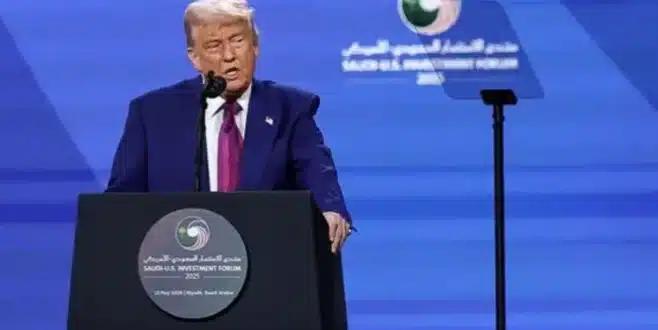During a high-profile visit to Saudi Arabia on Tuesday, U.S. President Donald Trump issued strong criticism of Iran, labeling it the most destabilizing force in the Middle East. Speaking in Riyadh, Trump accused the Iranian leadership of funding violence and contributing to regional unrest in Syria, Lebanon, Gaza, Iraq, and Yemen. He stated that Iran’s activities have brought extensive suffering to populations across the region and undermined efforts for peace and stability.
Despite the forceful rhetoric, Trump noted that the United States remains open to negotiations with Iran. However, he emphasized that this opportunity for diplomacy is time-limited. He warned that continued aggression from Tehran would trigger severe consequences, including heightened economic and diplomatic pressure. As part of this warning, he reaffirmed the U.S. commitment to driving Iran’s oil exports to zero and stated unequivocally that Iran would not be permitted to develop a nuclear weapon.
Trump framed the current approach as more than just a response to past actions, suggesting that the United States was offering Iranian leaders an alternative—a shift toward a more stable and prosperous future. He said the initiative aimed to provide Iran with a path out of isolation if it ceases hostile actions toward its neighbors.
Strategic Partnership with Saudi Arabia Deepens Amid Arms Agreements
The visit to Saudi Arabia also served to underscore the longstanding alliance between Washington and Riyadh. Trump marked the occasion as the 80th anniversary of U.S.-Saudi relations, describing the partnership as a foundation of both security and economic cooperation in the region. He declared that the bilateral relationship is entering a new phase, with both nations committing to strengthen ties further.
As part of this broader strategic alignment, the United States and Saudi Arabia finalized a major defense agreement. The deal includes the Saudi purchase of $142 billion in American-manufactured military equipment, aimed at enhancing the kingdom’s defense capabilities amid ongoing regional tensions. Trump described the Gulf region as a place ripe with opportunity, stating that it offered significant potential for building both future partnerships and economic prosperity.
Trump’s remarks reflect a dual strategy of exerting pressure on adversaries while reinforcing military and diplomatic ties with allies. The administration’s current stance on Iran mirrors earlier maximum pressure campaigns, with the added element of a conditional offer for engagement. His comments come amid a broader tour of the Gulf, where security concerns, economic agreements, and diplomatic recalibrations are shaping the agenda.


